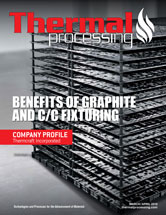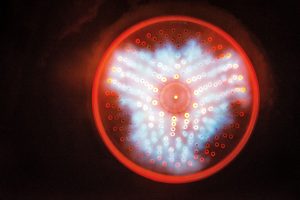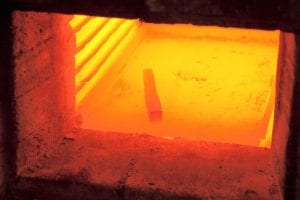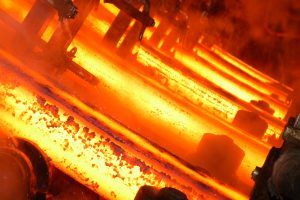Looking around your immediate environment, you may notice almost everything you use on a daily basis contains a metallic object that has undergone some type of heat-treatment process. The process used may be through-hardening, case hardening, annealing, or even brazing. All of these heat treatments involve elevated furnace temperatures where oxygen can adversely affect the surface of the material being processed.
To protect the material from surface reactions while it is being processed in the furnace, the heating chamber(s) are filled with an atmosphere. This atmosphere may be either inert or reactive. When a reactive atmosphere is formulated, it allows a desired surface reaction, such as carburizing, to take place. It is important to ensure the integrity of the processing equipment chamber so that the atmosphere contained inside can produce the desired result.
In order to provide a consistent envelope, most equipment operates at a slight positive pressure. This positive pressure is what prevents air infiltration. The chamber will typically have a vent that allows the pressure to be accurately controlled by venting off the excess atmosphere. When the chamber is tight and the pressure is maintained, the atmosphere composition will also be controlled. Maintaining the integrity of the processing chamber is the key to predictable process results.
There are some signs that can help determine if your equipment is not providing an effective environment for your desired process atmosphere. The signs may include part discoloration, decarburization, and scaling. In the case of an integral quench furnace with hydrogen-based atmosphere, there may be small explosions (i.e., woofing) because of room air infiltrating and combusting in the furnace work environment.
Visually Inspecting Common Leak Sources
One way to locate the source of a leak is to start with a detailed visual inspection of the equipment.
First, check the connection points where gaskets join larger equipment sections to smaller subassemblies. Evidence of hot spots where the paint has been discolored may indicate that gaskets have deteriorated and formed gaps.

When assembling or reassembling components, there are a couple of recommendations to ensure an air-tight seal. One suggestion is to use a double-wrapped gasket with overlapping ends to properly seal the gaskets (Figure 1). Another suggestion is to use a RTV (room temperature-vulcanizing) silicone to hold the gasket material to the frame as the two sections are mated together. However, you may notice some silicone products can char and burn out, leaving a passage for air infiltration. Even products designated for high-temperature use are only rated for temperatures below 300º F. As a best practice, use a thin layer of high tack adhesive for holding gaskets to frames for assembly. This will prevent air gaps from forming after thicker layers of RTV adhesive burn away.
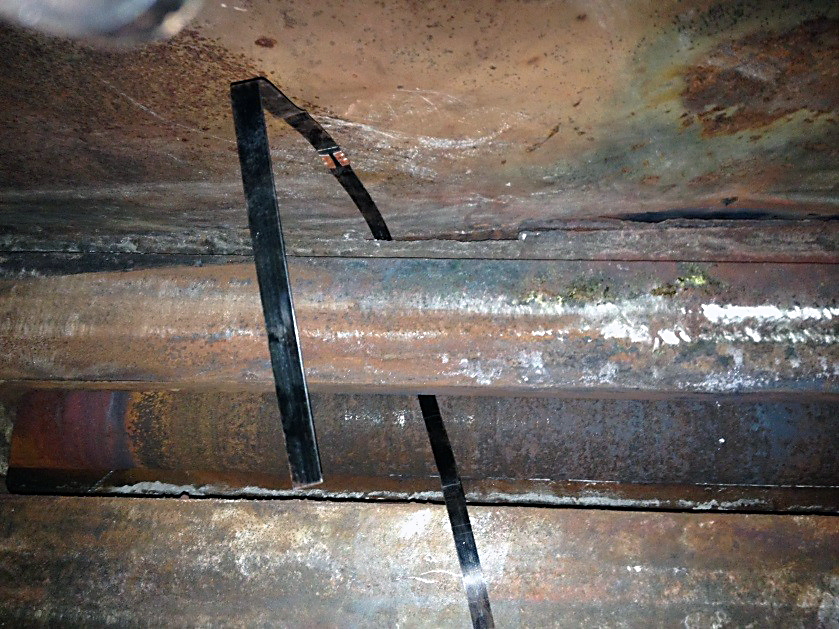
A second area of the furnace that is susceptible to leaks is the heating chamber. Over time, the refractory material within the chamber will expose the metal shell to unexpected temperatures. This causes cracks and weld separations that create leaks (Figure 2). This is why visually inspecting the furnace for discolored exterior paint can provide clues to the leak’s origin.
A third area of the furnace to visually inspect, and one of the more common sources for furnace leaks, is the packing glands that surround the cylinder shafts used to raise and lower inner doors and quench elevators (Figure 3).
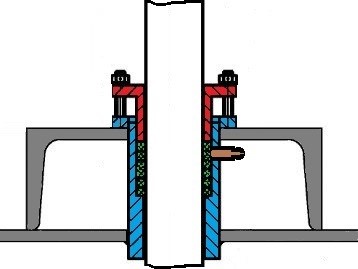
The shafts typically pass through a collar welded to the furnace shell. Graphite re-enforced rope, or simply ceramic rope wetted with high-temperature grease, is stuffed into a stuffing box. This creates a packing gland that seals tightly around the shaft. The packing is compressed and held in place with a compression collar. A grease fitting installed on the collar allows the stuffing material to be periodically lubricated, ensuring a tight seal to the shaft.
Leak Detection Methods
One method for detecting leaks would be using smoke generators (i.e., smoke bombs). They are very effective in finding leaks that are difficult to locate. This method is performed when the furnace is cold and after all combustibles have been purged from the furnace. Place the smoke generator inside the furnace and ignite it. The resulting smoke plume infiltrates the potential leaks and are spotted as it exits the furnace.
When using this method, remember that the furnace doors, effluent stacks, and any quench oil overflow pipes must be tightly capped off and a slight positive pressure should be introduced into the furnace. Remember that most furnaces operate with a slight positive pressure typically less than 1” water column. This integral pressure must be duplicated to force the smoke into any potential leaks. Pressures greater than the level that the furnace is designed to operate at can result in leaks occurring in places where they would not normally occur.
Another acceptable method is to spray a solution of water and liquid dish soap over suspected areas and look for bubbles that indicate there is air leaking.
Other Possible Leak Sources
There are additional ways air can enter the furnace chamber. Units that are heated indirectly through firing tubes can push air entering into the furnace through leaking tubes and tube packing glands.
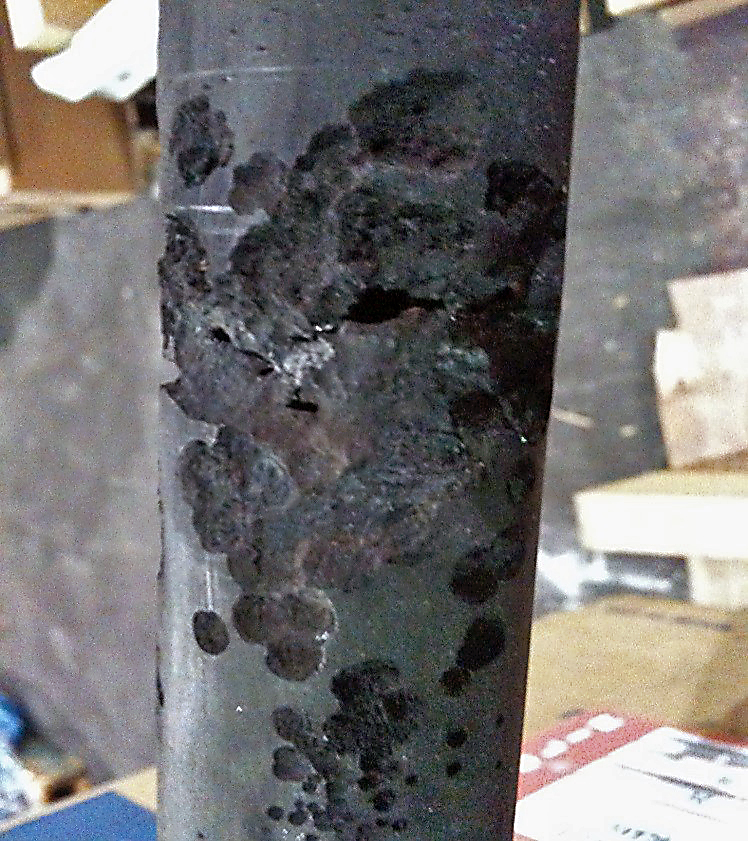
Another often overlooked area where air can enter is through thermocouple protection tubes (Figure 4). Thermocouples are checked and replaced routinely, but protection tubes are not checked as often.
Prevenative Maintenance
Integral quench furnaces that operate with a combustible atmosphere should be given special attention. During the quenching process, the chamber pressure can briefly go negative. This will allow air to be sucked into the chamber where it can mix with combustibles and ignite. This is what produces the “woofing” sound. Always remember that frequent inspection coupled with proper maintenance will help ensure that accidents do not occur.
At a minimum, a thorough bi-annual inspection when the furnace is cold should be performed with an emphasis on any areas where there are penetrations into the chamber. Additional recommendations are:
- Weekly lubrication of packing glands is critical and yearly replacement is recommended.
- Daily inspection of door seals should be done and promptly repaired when leaking.
- Immediately replace missing or damaged refractory.
Overall, visually inspecting your atmosphere furnace and performing routine preventative maintenance are critical to maintaining your furnace. While some leak sources are easily identified, others may involve a more thorough leak detection method to find and repair. Taking these steps will help ensure part quality and the overall successful operation of your equipment.













